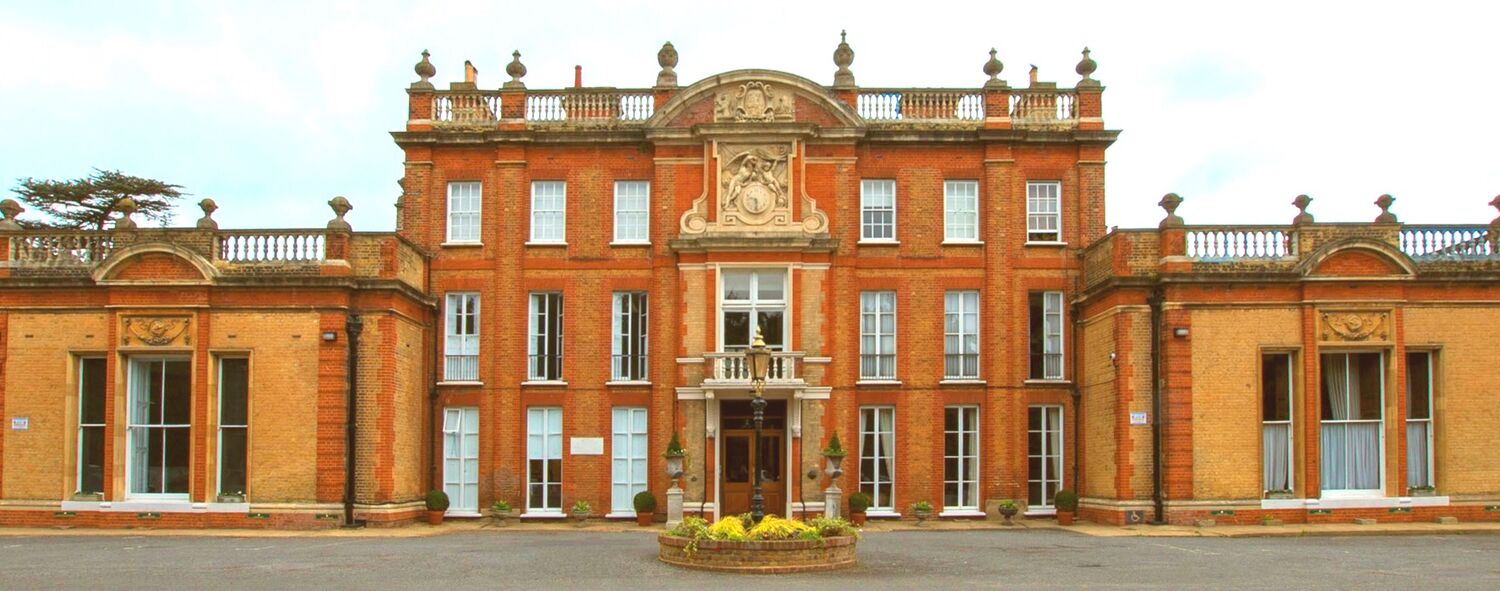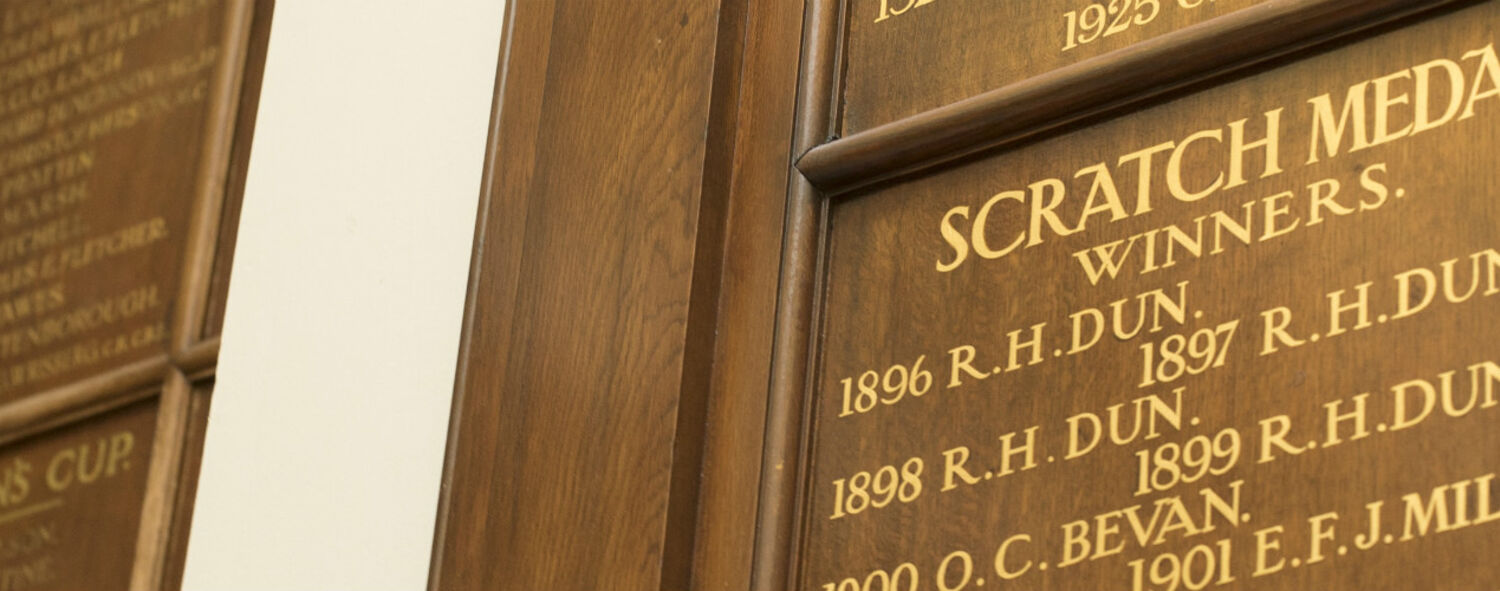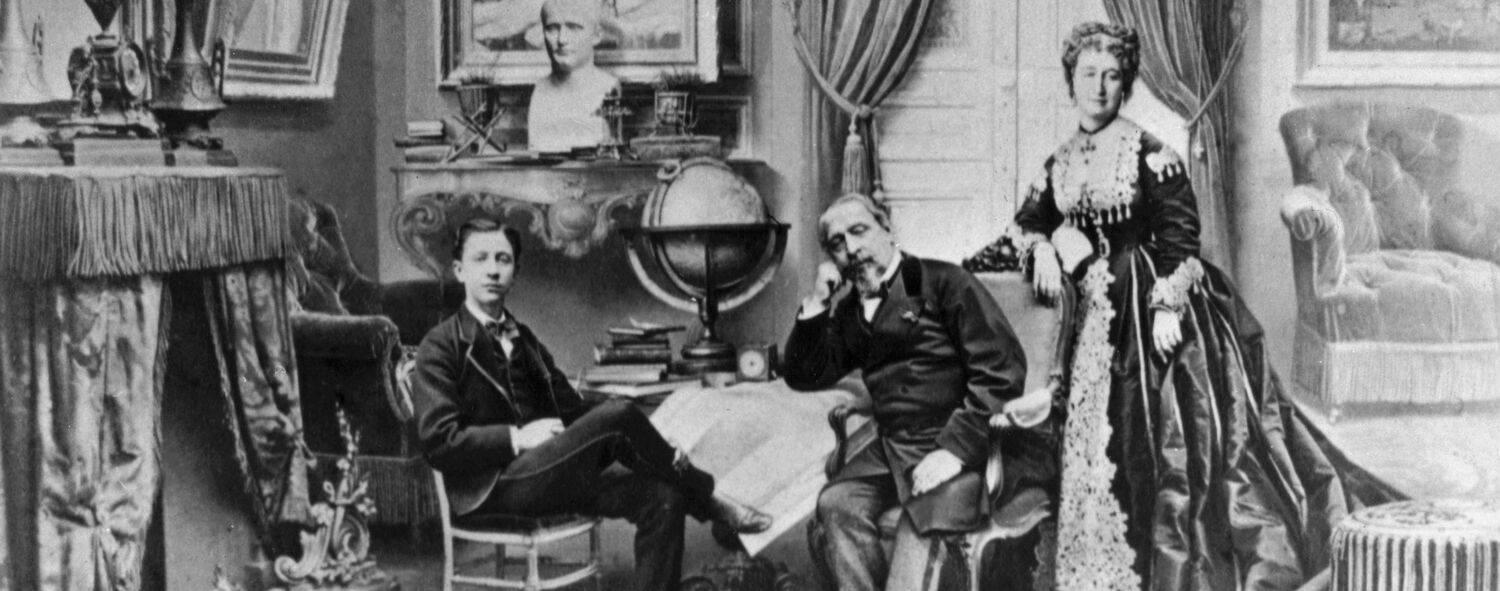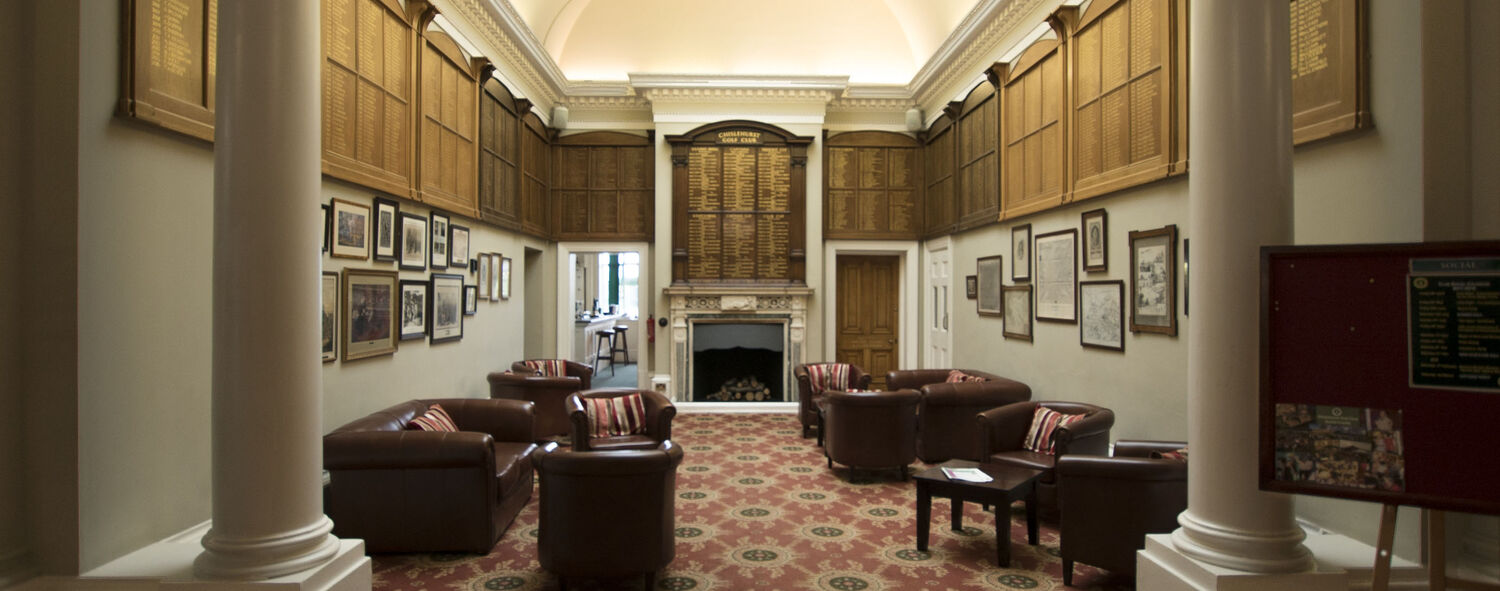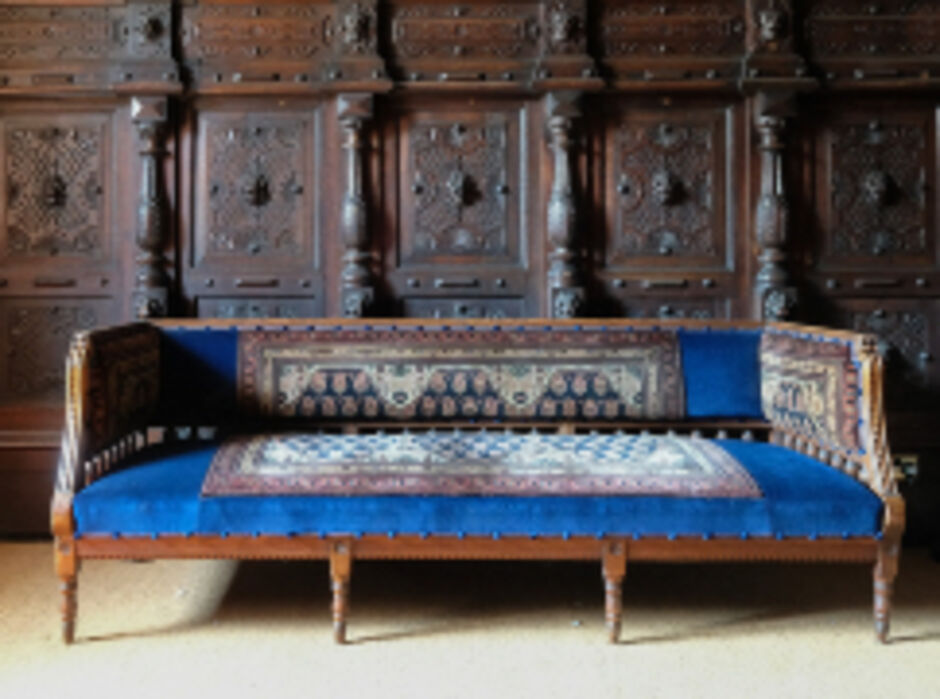
The Camden Place Trophy Hall
Hidden in plain sight
- Courtyard, Picture Gallery, Chapelle Ardente and now Golf Club Trophy Hall
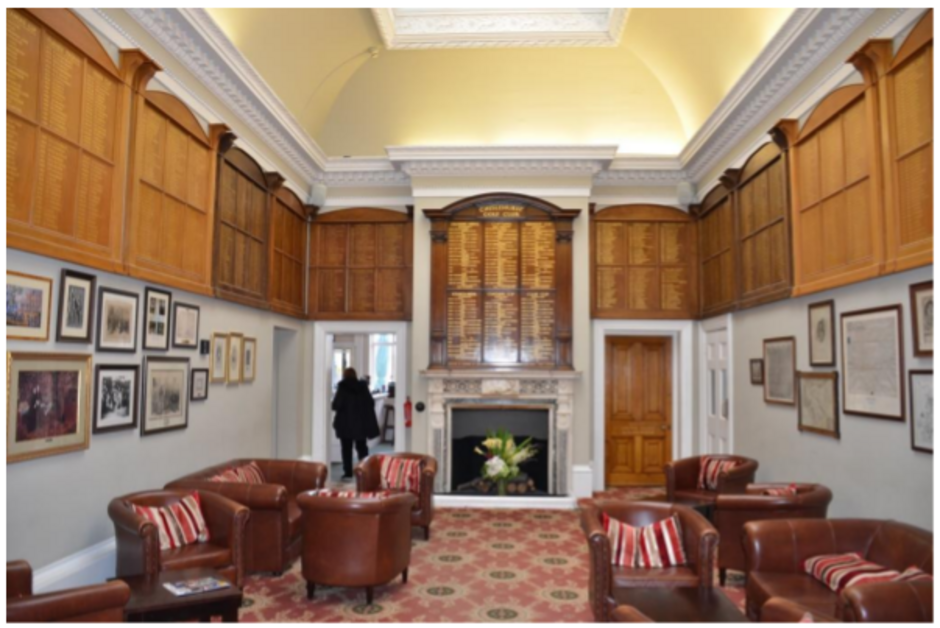
Today’s Trophy Hall started life as an open courtyard.
It was not until 1860 that Nathaniel Strode enclosed it to create a picture gallery for the house.
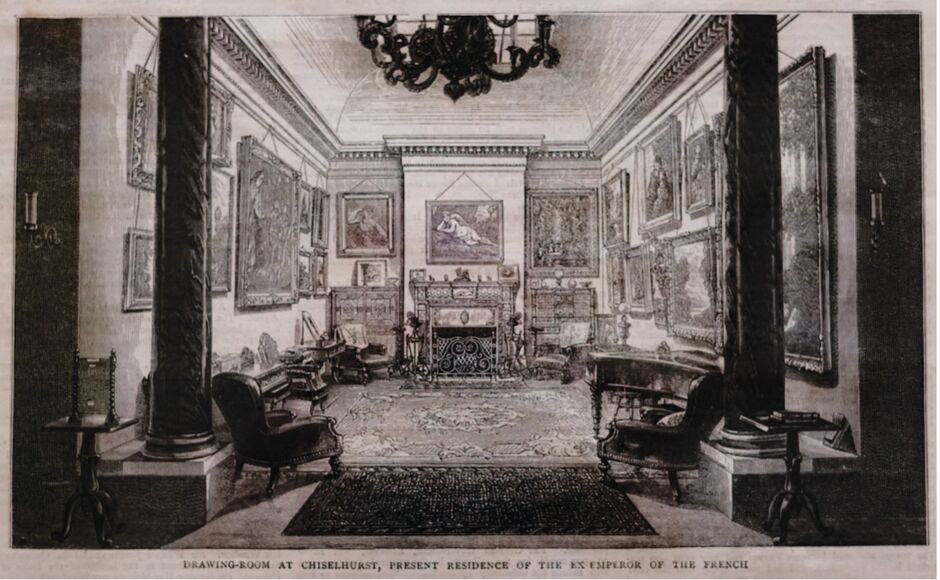
It retains much of its original decoration, including the mouldings of the upper cornice, the deep coving to the lantern, and a section of rinceau-decoration plasterwork decoration, all of 1860s date.
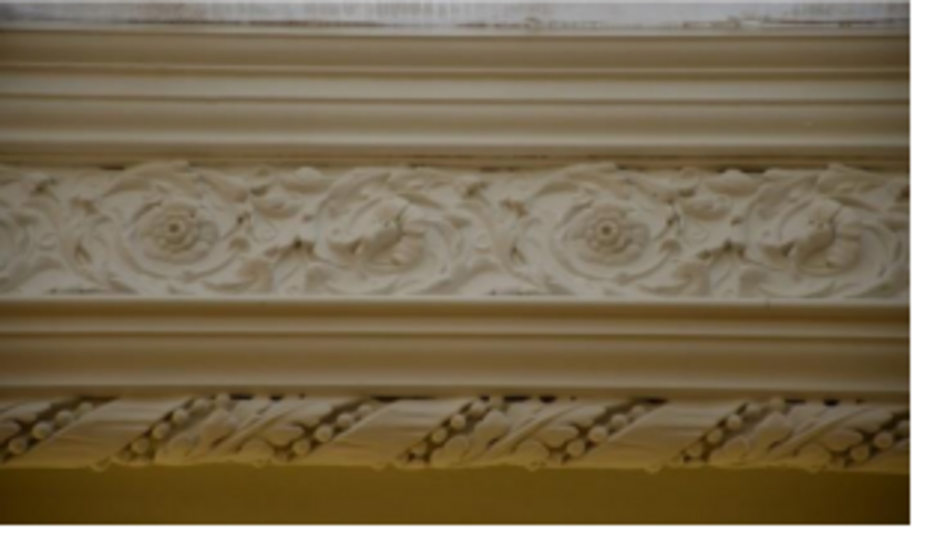
The most notable surviving feature is the fireplace.
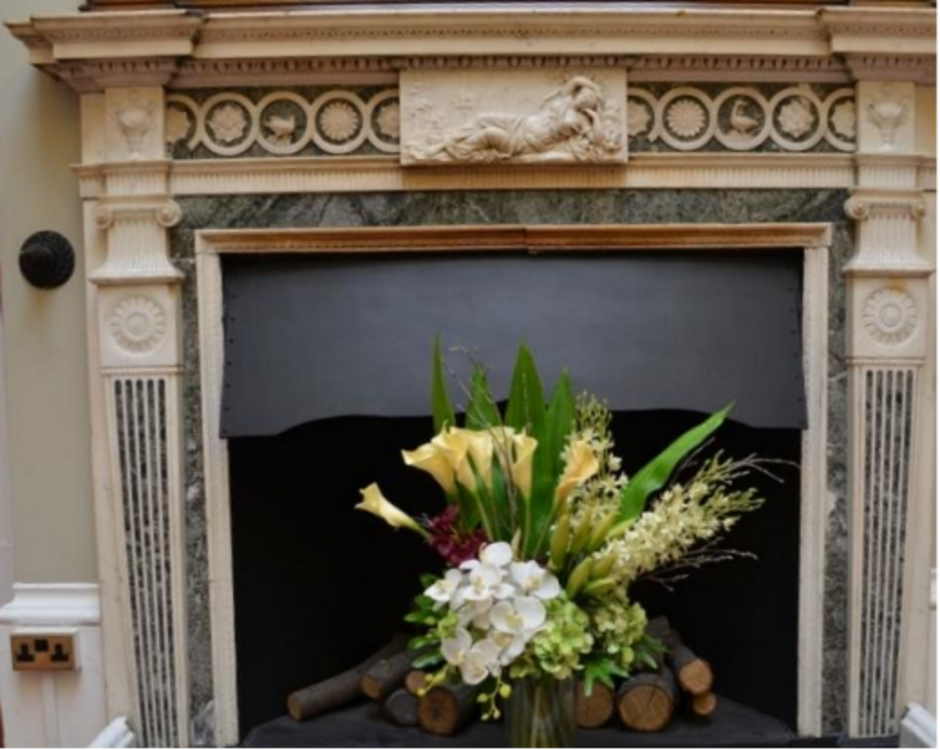
This is made in Carrara marble and verde antico marble, and is typically 1770s, in the neoclassical Adam style, with flanking jambs of infilled reeding, florets and ionic capitals surmounted by vases and a guilloche frieze bearing flowers and birds on either side of a carved tablet.
This example is of high quality and depicts Cleopatra dying after being bitten by an asp, shown at her breast.
The original grate does not survive.
This room was used as the chapelle ardente with the death of Napoleon III in 1873, bearing his coffin, which lay in state in a deeply draped interior allowing easy facility for members of the public, who could enter the main door, view the coffin and then be filtered out of the building, presumably by the south entrance.

